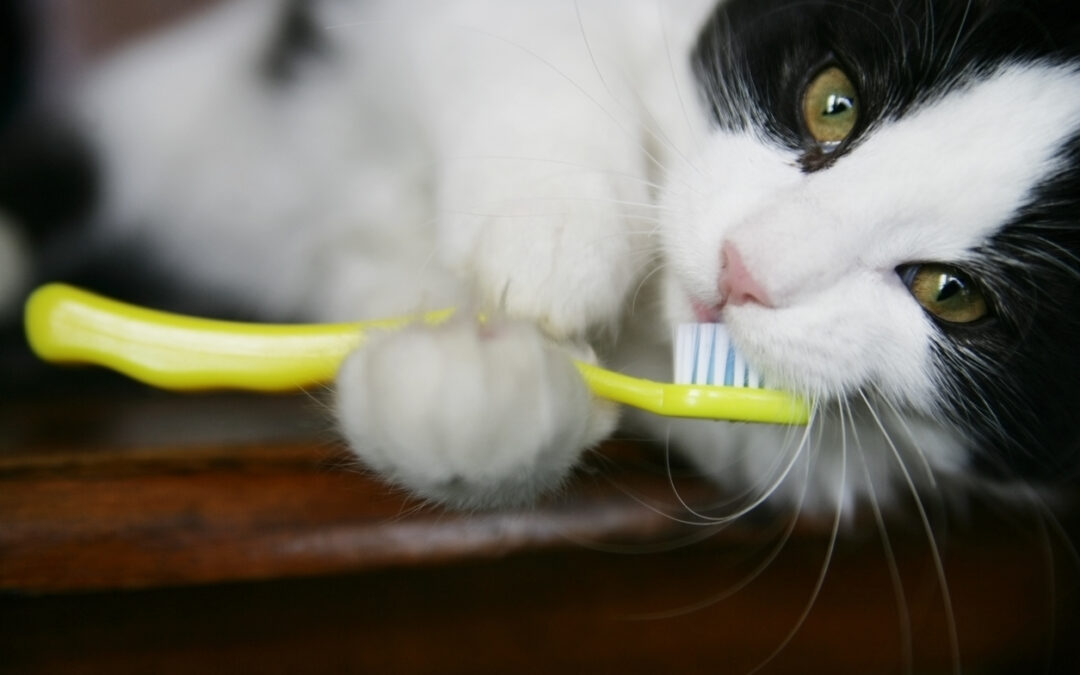February is Dental Month! And that means it is never too early to start thinking about your cat’s dental hygiene and care. We have constructed a basic overview below that answers some of the most common questions cat owners have when it comes to their feline’s teeth and what you can expect during a trip to the vet for a teeth cleaning!

A healthy mouth is a cat’s best friend!
Whether your cat loves lounging in their favorite sunny spot or spending their days chasing laser pointers and pawing at feathers, I think we can all agree no feline friend of ours wants to spend their time dealing with an unhealthy mouth and all the unfortunate side effects. By the age of three or four, most cats will have some gingivitis and potentially be in a stage of periodontal disease. Infection and disease rooted in the mouth can also potentially lead to Feline Immunodeficiency Virus, and some felines’ teeth can be plagued with feline odontoclastic resorptive lesions, or FORLs. While these may seem like scary and complicated problems, there are some simple and easy signs you can look for that may indicate it is time for a dental visit – if you haven’t already regularly scheduled a dental exam!
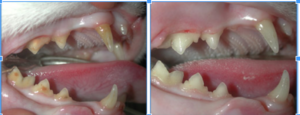
The Tell-Tale Signs…
If your cat shows any of the symptoms listed, it might be time to call your vet and schedule a visit:
- Excessive pawing at the mouth
- Trouble/Difficulty chewing food
- Excessive Drooling
- Excessive/Abnormal Odor from the mouth
- Discolored teeth
- Dark red lines along the gum line
- Red and swollen gums
- Ulcers on the gums
- Pus
- Loose teeth
- Ulcers on the tongue
What to expect during your cat’s dental visit!
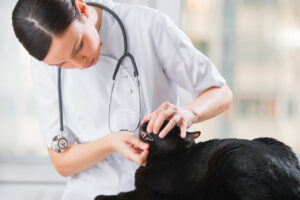
A dental visit with your veterinarian can best be characterized in two stages. This first involves an oral examination. While inspecting your cat’s mouth, you veterinarian is looking for a variety different of conditions and symptoms, including:
- Odor
- Red or swollen gums
- Bleeding gums
- Discolored teeth
- Broken or missing teeth
- Plaque and tartar
After an initial examination, general anesthesia is required to conduct a more thorough set of examinations and cleaning. The anesthesia allows your vet to look more closely at your cat’s teeth, gums, tongue, mouth, throat, and jaw. Your veterinarian will look for periodontal pockets around the teeth, check all of the teeth individually, as well as take x-rays. All of these steps are vital in determining the presence of periodontal disease, or gum disease. Your vet may also check for a variety of other factors, including:
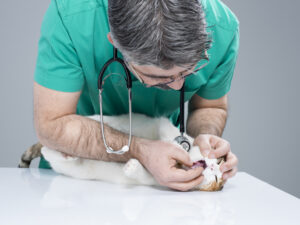
- Malocclussions (when a two teeth are touching, or a tooth is touching the palate or soft tissue)
- The tongue and underneath the tongue
- The tonsils
- Cheek tissue
- Lip margins
- The jaw
- TMJ joint
- Enlarged or swollen lymph nodes
What does a cleaning include?
If your vet determines that simple cleaning is in order, your kitty will undergo:
- The removal of calculus above the gum line
- The removal of calculus below the gum line
- The smoothing of rough tooth surfaces
- The removal of dead gum tissue
- An irrigation under the gum line
- The application of fluoride
- A final tooth-by-tooth polish?
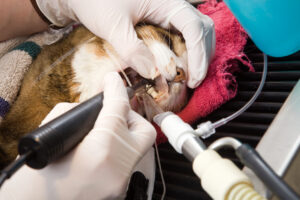
Of course, if further treatment is needed, your vet will take you through your specific treatment plan step by step. Cats that have feline odontoclastic resorptive lesions, or FORLs, are more likely to experience them in the future and thus require a specific treatment plan (but do not worry, FORLs are curative!) All breeds are different, and some require different treatment regimens or a little extra oral attention!

